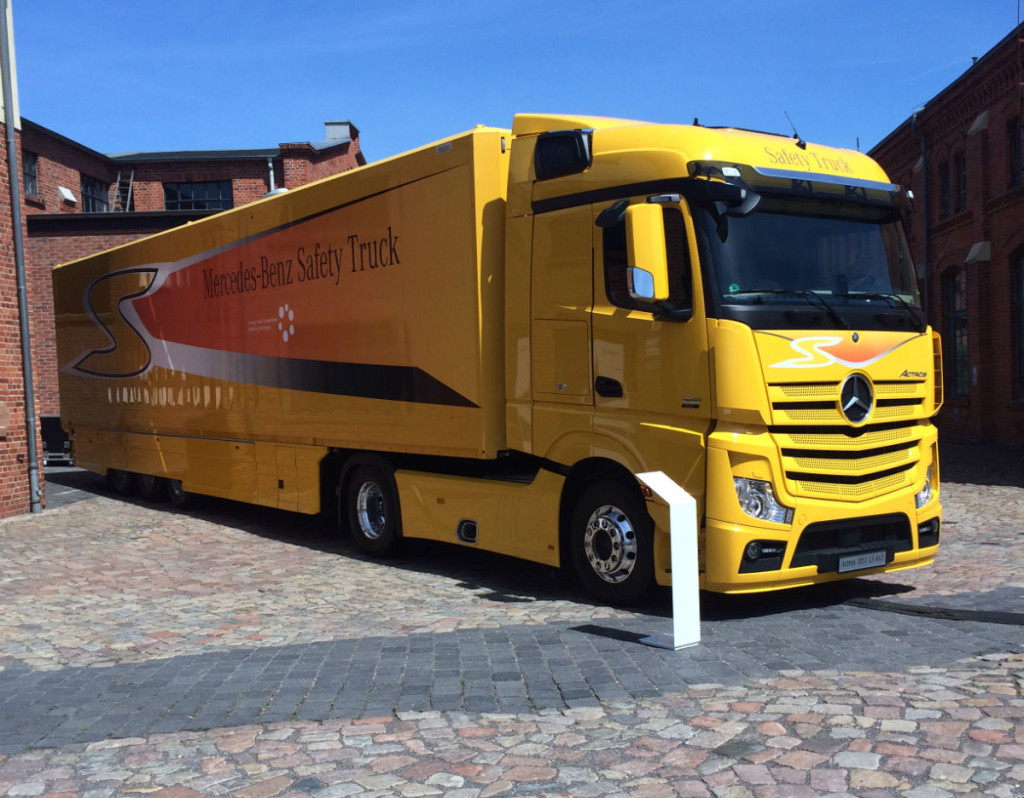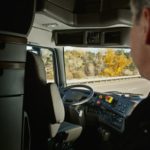
We’ve had intelligent unmanned cars, planes, carriages, shuttles and what have you. But not so much about Intelligent trucks until probably now! The line between reality and science fiction is about to shrink further as the age of autopilot intelligent trucks creeps in much closer than ever.
And who else to take this paradigm shift to a whole new level other than one of the world’s most renowned automotive companies, Daimler of Germany (Manufacturers of Mercedes Benz range of automobiles and several other brands).
On the 3rd of July 2014 at a global demonstration in Magdeburg, Germany, Daimler, while playing host to its “Shaping Future Transportation 2014″ conference, stunned the visiting audience with an actual fully-functioning autonomous truck operating at real-world speeds on a special section of the Autobahn. However, the caveat was that the autonomous truck may not be ready for real-world deployment until probably 2025.
According to Daimler, these new “truck autopilot” systems will not diminish or eliminate the role of the truck driver, but rather turn him or her from a “trucker” to a “transport manager.” Daimler was however quick to note that the system is not a new truck or even a new product, but instead a revolutionary shift in the way the transport system of the future will develop. As a matter of fact, there was a recent testing of self-driving heavy-duty trucks (a convoy of four trucks on an oval track) in Tsukuba, Japan with the lead truck having an active driver and the following ones having drivers who remained passive until there was a need to get out of the platoon. There have also been similar tests in the United States and Sweden.
According to Daimler however, the motivation behind the conception and drive to actualize the ‘Highway Pilot’ includes the need to provide a new system that offers the highest possible level of traffic safety while conserving resources, reducing emissions and eliminating physical and mental stress commonly experienced by drivers in tough road and traffic conditions.
How it works
The truck is a specially-equipped Mercedes Actros tractor-trailer fitted with front-facing radar sensors and cameras to scan the road ahead. Both systems are tied into a Lane Keeping Assist system. Additional sensors track areas to the sides and rear of the truck to provide the system with a complete view of the vehicle’s surroundings. The sensors are so precise they can not only recognize the road edge by marker lines, but even identify the course of the road surface by detecting guardrails or vegetation. A vehicle-to-vehicle communication system transmits continuous telemetry to other cars and trucks on the road while receiving and processing their information in return. Even if another vehicle does not have a communication system, Highway Pilot tracks and monitors it as well.
The range of the communication system is about 500 meters. Since all the vehicles are speaking to each other, they can respond simultaneously to any threat — from something as commonplace as another car merging onto the highway or a traffic jam up ahead or something more serious such as debris in the road or an accident.
Once Highway Pilot is activated, the truck driver is able to rotate his seat 45 degrees to the passenger side of the vehicle to a working position or recline into a rest position. In this mode, the driver can attend to some routine paper works or updates on a tab. In total both the truck and the driver are alerted to road conditions outside the line of sight and able to prepare for them in advance before they become a problem. The driver always has the option of taking control of the truck away from Highway Pilot at any time.
Huddles to Scale
Impressive you would say! The benefits of Highway Pilot notwithstanding, Daimler pointed out that the unveiling in Magdeburg, Germany, is simply a demonstration of the feasibility of the concept and the technology. Daimler cautions that much work remains to be done on the legal, infrastructure and technology fronts before a system like Highway Pilot can enter real-world use.
While we wait with bated breath, at least there is now a clearer vision of the practicability. So if Germany and other major economies get it done by 2025…then ofcourse there is hope that it will hit our turf a couple of decades down the line….and if we are damn lucky, we get it replicated here in…hmmmmm…maybe a couple of years after. Not a bad thing to dare to dream!







